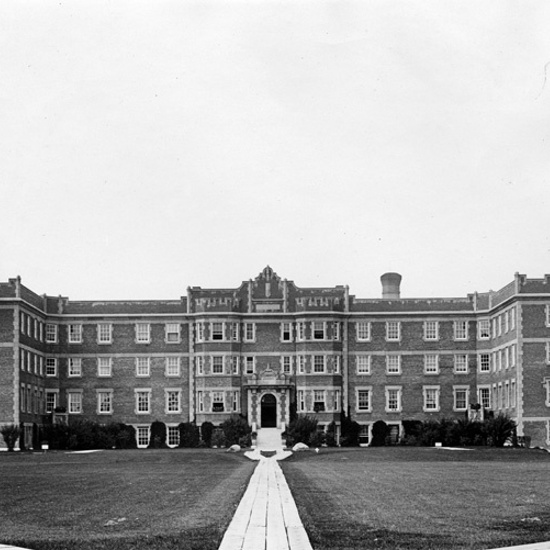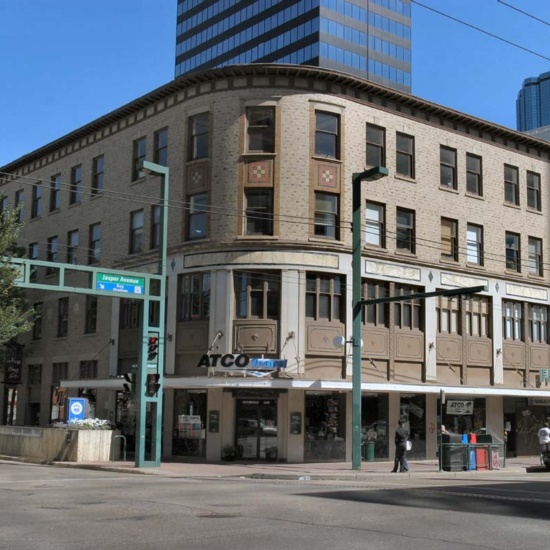Nobbs & Hyde
“Hyde, like Nobbs, was a perfectionist; and the care lavished on detail is apparent in all the firm built, whether private houses, academic structures, or office buildings.” Biographer Susan Wagg
“Hyde, like Nobbs, was a perfectionist; and the care lavished on detail is apparent in all the firm built, whether private houses, academic structures, or office buildings.” Biographer Susan Wagg
Nobbs & Hyde (1910-1944)
Percy Erskine Nobbs and George Taylor Hyde came together in 1910 in Montreal where, for the next 35 years, the duo designed school buildings, offices, shops, clubs, church interiors and houses. Born in Scotland, raised in St. Petersburgh (Russia), and educated in Edinburgh, Nobbs came to Montreal in 1903 to work at McGill as the Director of the Department of Architecture and as a professor. Nobbs felt that he could only teach what he was actually practising; McGill reluctantly agreed that he could take up a private practise in conjunction with his teaching role only if it was in association with another practising architect.
Married to Mary Reppert, with whom he had a family of three, Hyde had become a prominent architect in his native Montreal upon his graduation from Architectural Engineering at McGill in 1899 and after some experience in other firms in Montreal and Pittsburgh. According to Susan Wagg, “the association was an ideal one since Nobbs, although a gifted designer, had a notoriously short temper and needed a practical man to handle technical aspects and carry on the business side of the firm.”
The partnership of Nobbs & Hyde laid an indelible foundation for the University of Alberta. The first president of the university, Dr. Henry Marshall Tory, had been a colleague of Nobbs’ at McGill. In 1907, Tory asked Nobbs for assistance, not only with the design of the university buildings, but with the best locations for each element of a master plan. Nobbs traveled to Edmonton with his assistant at the time, Frank Darling, to personally appraise the location and ultimate concept for the new institution. They drew up the Master Plan for the University of Alberta in 1909. It was an ideal commission for the architects: the proposed site was an unoccupied space consisting of over 200 acres on the high banks of the North Saskatchewan River directly across from the location of the new provincial legislative building. According to Wagg, Nobbs advised against the Collegiate Gothic style for the university, citing that “climate, materials, and tradesmanship alike forbade the use of the mullioned styles of collegiate gothic on the prairie in the twentieth century.” Instead he suggested, “an elastic free classic style in accordance with modified English traditions.” Nobbs & Hyde proposed carrying out construction gradually, to carefully consider the future developments of the university. In fact, Nobbs personally asked Tory to delay the construction of the Arts Building because he saw it as one of the most important elements of the entire layout. Likewise, although he was training soldiers for physical combat in the First World War at the time, Nobbs requested that Tory wait so that he could personally design the furnishings in the faculty room and president’s office “as they are not very ordinary sorts of places”. A modified ground plan for three residences and the Arts Building was finally prepared by Allan Merrick Jeffers, the Provincial Architect of Alberta, with Edmonton architect Cecil Burgess supervising the construction of all the buildings. Burgess and Nobbs had spent time together in Edinburgh and Montreal.
Nobbs & Hyde went on to design the Arts Building, laboratories and Power House, and Medical Building for the University. They even drew up the plans for an office building in downtown Edmonton for Henry Birks & Sons. When Hyde died in 1944, Nobbs took up brief partnerships with Hugh Allen Inglis Valentine and with his own son Francis John Nobbs, but ultimately Percy Nobbs became disillusioned with the constraints put on his profession, the tight budgets and design criteria which forced architects to abandon the artistic and cultural elements of their craft and settle for ‘accommodation engineering’.
Married to Mary Cecilia Shepherd, and father of two, Nobbs was a man of many talents. He won a silver medal in fencing at the 1908 Summer Olympic Games in London, was a gifted artist, and an avid fly fisher; he was a founding member of the Atlantic Salmon Federation. Serving in both Canada as an instructor in physical training and bayonet combat, and at the front in the First World War, Nobbs attained the rank of major. He died in Montreal in 1964.
Details
Type
TBA
Founded
TBA
Architects
Time Periods
Neighbourhoods
Architectural Styles
Character Defining Elements
Brick cladding, Brick structure, C shaped footprint, Capstone/Copestone, Carving, Crenellated parapet, Curved facade, Decorative brick, Dripstone, Flat roof, Frieze, Irregular footprint, Keystone, Mosaic tile, Pilaster, Polished stone, Rectangular footprint, Smooth stone, String course, Three storeys or more

